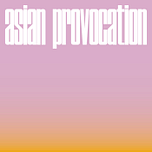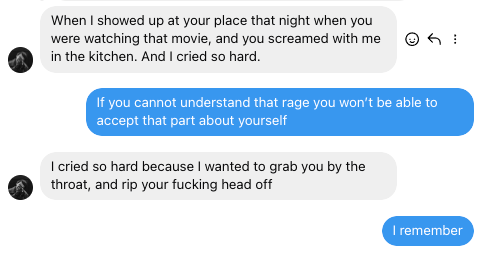A Side
I start with this image—the image of a white Belgian girl gawking into the cage of a black girl. The white girls’ gaze is a powerful example of colonial curiosity and that of white innocence. The remainder of the white observers at the non-white as objects of fascination.
The cage that divides the two people in this photo also divides one who has agency and one who is objectified. White innocence is socialized into white supremacy and colonial dominance without conscious awareness. This experience and image functions as a reminder for both the whites and the blacks of the power dynamics and colonial dominance without critical understanding.
The black girl in the cage is subjugated. Susan Sontag has posited that the camera gaze can be an instrument of power, particularly for categorizing and exoticizing the other. In this photo, the child in the cage is deemed as subhuman.
When we analyze photography's history, particularly images, we uncover a troubling narrative of Western voyeurism. The bodies of the 'other' are transformed into a spectacle for Western consumption. As Edward Said has astutely observed, the Western project is deeply intertwined with the Western gaze and the construction of racial difference through visual and cultural representation.
And what is the analysis of the camera’s gaze?
In the film The Great Debaters (2007), directed by Denzel Washington, there is a vital scene where the protagonists, the students from Wiley College, travel through the Jim Crow South, and their car accidentally runs over a pig. The students, accompanied by their professor, were confronted by the white farmers, who demanded compensation for the pig. However, the farmers’ confrontations were racist and hostile, as well as humiliating. The farmer demands an exorbitant amount of money for the pig, taking advantage of the power dynamic that exists under the system of Jim Crow segregation while enjoying the degradation of the black man in front of the children and women. Despite the whites being in an economically more challenged position than the black travelers in an automobile, the white supremacists can enjoy the excess of white supremacy.
In The New Jim Crow: Mass Incarceration in the Age of Colorblindness (2010), Michelle Alexander shows that the U.S. criminal justice system functions as a new racial caste system, disproportionately targeting Black and Brown individuals under the guise of colorblindness. Today, the white liberal complicity comes into play when they fail to recognize how their economic, social and political privilege is maintained through the same system. Just like the farmers who were at a clear economic disadvantage in contrast to the black family, they abused the existing structural power dynamics to extract further gains, going well beyond the bounds of moral and social contracts.
In times of economic downturn, white liberals often experience a decline in sympathy for racial justice, similar to the white farmer’s hostility toward the Black students in the Great Debaters scene. Economic struggles lead to a focus on self-preservation, and white liberals may view conversations about racial inequality as irrelevant or divisive. This is how white victimhood plays a central role in the ongoing structure of white imperialism.
The white liberal is no different from the white conservative, as it is during times of economic duress that they reveal their adamancy to maintain white privilege. The fight for social equality is meant to improve as many lives as possible. However, the confusion and oversimplification of civil society as entirely a zero-sum game brings out the racist attitudes even amongst the most educated and well-meaning whites and white adjacents.
Similarly, many modern white liberals are unconsciously invested in racial hierarchy, for it is here where they can practice their generosity as well as differentiation from other whites in their pecking order. The liberals require the maintenance of marginalization as a comforting reassurance for white dominance while they distance themselves from overtly racist practices. This explains the reason why when the white bourgeoisie pointed out their hypocrisy within a black-and-white framework, they often threatened the racialized that they might receive a worse master, such as Trump or the AfD. However, the ruling liberal elites have alienated themselves for so long from even the majority of the lower classes of whites that their platform is shrinking in size. The miscalculation reveals the blindness to the political landscape, in which they resort to threats of a different whip. But it is the liberal whites who are ignorant of the existing whip, not those on the receiving end of the existing terror. For the subjugated, the color of the whip does not make a difference to the sting. The liberals have forgotten that they are the ones holding onto the whip.
The Willful Ignorant White
Wilful ignorance refers to choosing not to know or engage with information that might challenge one’s comfort, worldview, or privilege. Many white people and white-adjacent individuals engage in willful ignorance when it comes to understanding systemic racism. Today, in a world of information abundance, the strategy to maintain power, at least in one’s bubble, is not an innocent lack of awareness but an active avoidance. White individuals must carry on their lives, maintaining the belief that the world is just and that their success is the result of hard work rather than a system stacked in their favor.
However, this kicking-the-can-down-the-road strategy has allowed a proliferation of existential horrors, multiple genocides and an environment in fast decline. Whiteness functions as a vanishing mediator, as developed by Fredric Jameson. The mediator is crucial in enabling changes but vanishes once its role is fulfilled, leaving the transformation results, not the process or the mediator itself.
Whiteness, therefore, can be understood as a vanishing mediator in racialized social structures. Whiteness is an invisible, unmarked racial identity that facilitates admission and benefits into the club, yet it is often rendered invisible or neutral in discussions about race. The invisibility allows white people and white adjacents to enjoy the privileges of whiteness without acknowledging their participation in these structures. As a result, whiteness “vanishes” in discussions, leaving behind the effects of white supremacy without directly naming the racial power structure that produces those effects.
Whiteness is, therefore, the vanishing mediator that facilitates the continuation of systemic racism while remaining largely unexamined or unspoken in mainstream discussions. It perpetuates myths like neutrality and normativity. It enables transition and disappears. It forbids the ability for whiteness and white privilege to be discussed, named or critiqued.
It also allows whiteness to adopt victimhood tactics to avoid discussing racism. It shifts the conversation away from the issues and focuses on individual grievances. False equivalences are used to argue that white people experience discrimination, too, serving to downplay the significance of systemic racism.
The problem with tokenism and the pity economy
As Palestine continues to reveal the horrors of white supremacy, the contradictions and underlying prejudices of islamophobia, xenophobia and outright racism, many are going all-in for Vice President Kamala Harris as a beacon of hope. It is precisely that she presents vacuous speeches, her empty promises, which allow the farcical dream of liberal democracy to continue. As Marx stated, "History repeats itself, first as tragedy, second as farce." So perhaps here, fascism repeats itself, first as white supremacy, second as inclusivity? As people cheer and throw record donations to the Democratic party, the system promises everything but changes nothing. The superficial diversity of a “Black Woman” is an ongoing adaptive signifier. As Donald Trump admits: “She was always of Indian heritage, and she was only promoting Indian heritage. I didn’t know she was Black until a number of years ago when she happened to turn Black, and now she wants to be known as Black. So I don’t know, is she Indian or is she Black?”
Tokenism provides a solution to a problem of image, hoping to absolve the institution from charges of racism or existing white supremacist culture and exclusion. These are not honest engagements of the problem.
So what happens when these issues are brought to the surface? Recently, a white man confessed to me that during a discussion earlier:
“When I showed up at your place that night when you were watching that movie, and you screamed with me in the kitchen. And I cried so hard. I cried so hard because I wanted to grab you by the throat and rip your fucking head off.”
What causes this anger and frustration? Whiteness as a vanishing mediator does not allow for critique. When issues of racism are discussed, covert white supremacists often interpret this as a narcissistic injury. An attack on their ego. This leads to defensiveness, and the white person attempts to shield themselves from the discomfort of confronting internal white privilege.
For the white person, confronting the realities of systemic racism has been so ignored that it challenges for the first time for many people their self-perception as moral, just and fair. White violence manifests itself as a desire to retreat from these uncomfortable truths, often by minimizing the experiences of racialized individuals or dismissing their perspectives as exaggerated or divisive.
We see the continuation of this structure, as Zionists admit gleefully, their desires, motivations and actions of genocide. The white imperialists, whether covert liberals or outright white supremacists, are only too happy to ignore the reality of the genocide. Endless videos capture the brutality, yet many choose to look away while simultaneously punishing those who speak. Peaceful protests are met with violence. The mobsters known as the riot police, paid for by its citizens, ensure the erasure of speech while they continue their illusions of peace.
Colonialism has returned as fascism. It is a misconception that power is unfavorable and manipulation is negative. Every being in the universe seeks to manipulate the world around them and exert control. Power is itself neither positive nor negative. Fascism is not unique in its desire for power. Fascism opts for a consolidation of power.
On the one hand, it exerts the power of violence, but it is even more efficient through scare tactics to promote silence and reinforce the Status quo. Silence communicates consent. Hence, we have the genociders producing endless content as they test the boundlessness of terror while receiving record amounts of arms and funding. It provides the perpetrators with the confidence to act with impunity. All the while, the commiseration of the poor begins to show its true colors.
To confront, however, creates emotional discomfort. Under the white supremacist paradigm, the selling of greed causes loss aversion, which is stronger than the possibility of change and a better world. However, guilt results from inaction, eventually becoming resentment, and so the cycle continues.
Here is a video of depicting Blanche Doumer throwing coins at Vietnamese children. It was filmed around 1899 to early 1900, in French Indochina, present-day Vietnam, Laos and Camboia. During that time, Veitnam was under French colonial rule, and Paul Doumer was serving as the Govenor-General of French Indochina. The video depicts his wife and their daughter, throwing coins at the Vietnamese people at a temple. The video illustrates the power imbalances, but also provides for the white ego, the sense of superiority through generosity. What is not expressed in this video, is the backdrop of the brutality of the colonizing power, and the patronization and dehumanization efforts from the French.
In contrast, as the US Airdrops food to Gaza, we must ask ourselves, who caused the conditions for the need of such airdrops in the first place? The “generosity” of the powers at hand, pales in comparison to the expenditure of the violence that is created by the Empire.
Today, polio has returned to those in Gaza. The Israelis has provided temporary lift on the embargo and supplied those in the concentration camp vaccines, only to be bombed the next day by the same imperialists. In this way, the pharmaceutical companies, the industrial military complex and so called humanitarian organizations can all confirm their expenses as well as receive additional handouts.
Imagination vs Fantasy
We are overwhelmed by the horrors that appear on our screens. Many opt out, shutting themselves in their Platonist caves, only to transform into incel mass shooters. Others decide to support the lesser evil. Here, we find the importance of a more pertinent theory.
In psychoanalysis, there is a distinction between imagination and fantasy. Hegel’s dialectic helps us understand another possibility beyond black-and-white thinking: engaging the imagination for progressive social change, as opposed to escapism or stagnation.
In psychoanalysis, fantasy is a mental process that serves to escape reality. For Sigmund Freud, fantasy is closely linked to the pleasure principle, where individuals indulge in wish-fulfillment scenarios that allow them to avoid confronting difficult truths or harsh realities. Fantasy creates an illusion that they can distance themselves from the world where they need to engage with actual problems or face conflict. The result is a strategy that allows an escape from reality. The fantasy can lead to regressive thinking, where people remain trapped, idealized, and often unachievable scenarios. It is psychically stagnating, where the person becomes increasingly detached from reality, preventing them from confronting or changing the actual conditions that cause their discomfort.
Imagination, on the other hand, is a process that helps individuals engage creatively with reality. It allows a person to conceive of new possibilities. While it envisions things beyond the immediate, it is informed by an understanding of realist constraints but courageously envisions new ideas. We must reject illusory senses of progress or escape from brutal truths. It is only through contradictions that sublation can happen.
This current empire, like all empires, will eventually fall. Another world, has always been possible.
B Side
Some days, I think about how powerful the resistance is, how effective change theory can be, and how much shift and acceleration there is to the decline of an empire. It’s also terrifying to see how people cling on, react, whine, and throw temper tantrums with the shifting of tides.
I’ve received threats. Complaints. Wishes. Make Ayoto Paul Again. It is strange to see people’s reactions when one stands steadfast with an alternative vision. How much riot gear is needed to combat peaceful demonstrations?
Those conditioned to maintain and operate under a system of competitive capitalism that was compensated by white supremacy are struggling to understand and identify with the colonized. It’s fascinating to watch the torrents of victim Olympics surface, fighting for that precious Environmental Social Governance Score from value-conscious investors that further extraction, which hedges against colonial white shame.
Suppose we are to look beyond the superficial markers of different fascist struggles, say Zionist supremacy logic, Nazi ideology struggles, and All Lives Matter struggles. In that case, it returns again and again to the politics of identitarianism and victim Olympics. The latent logic focuses on resentment, identity, and exclusion. The result is tone deafness.
The subtle but major difference is between those who stand in solidarity alongside humanity with humility and those still preoccupied with the rat race. The dead giveaway is today’s litmus test, which is how one treats the topic of Palestinians. It is the keystones that keeps up the façade of white imperialism.
And so I wish today whatever you wish for the Palestinians.

















Share this post